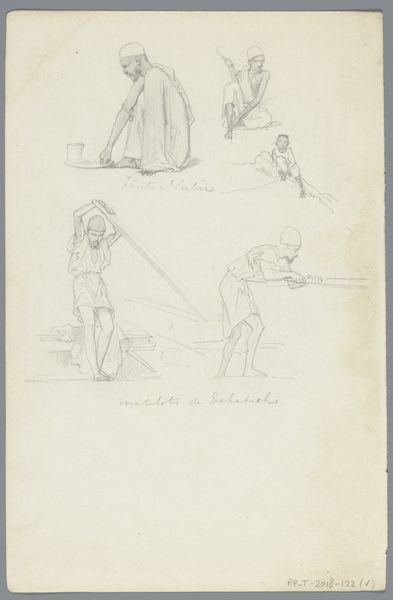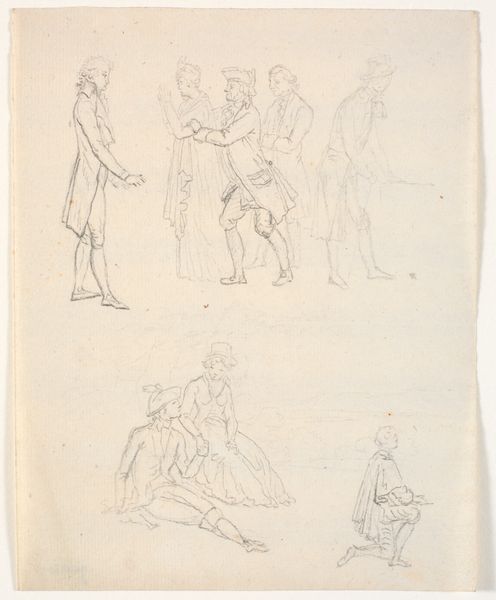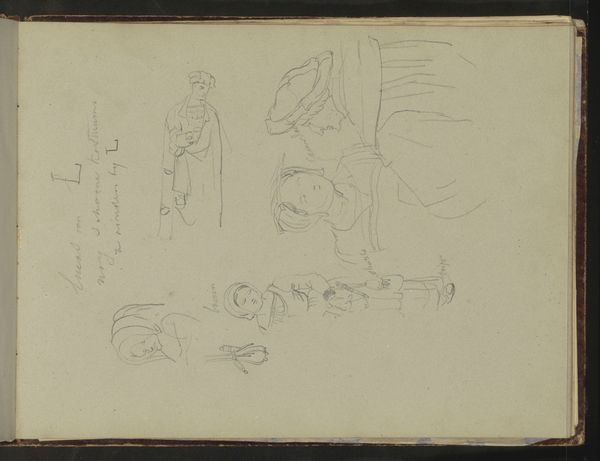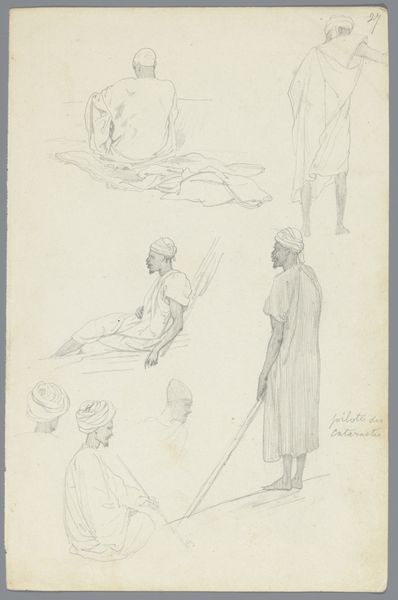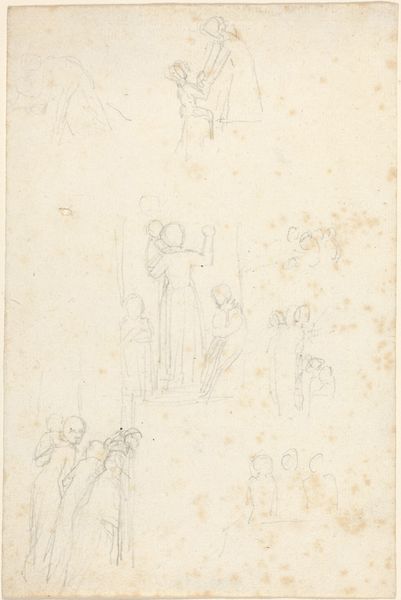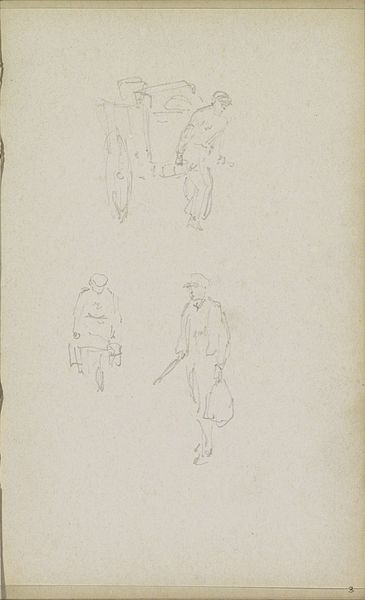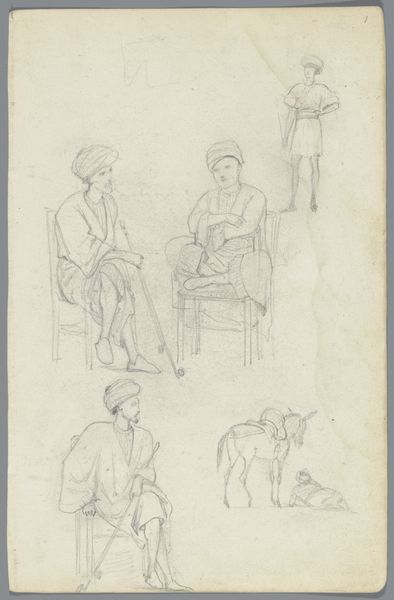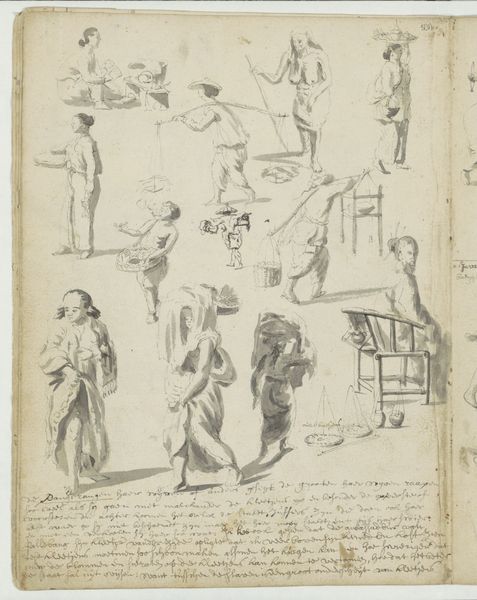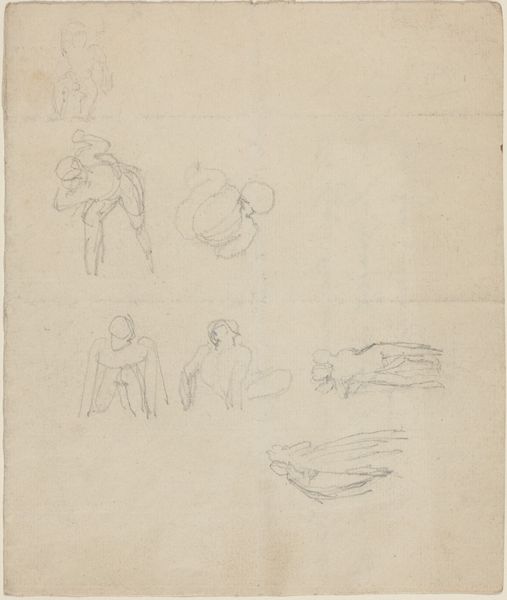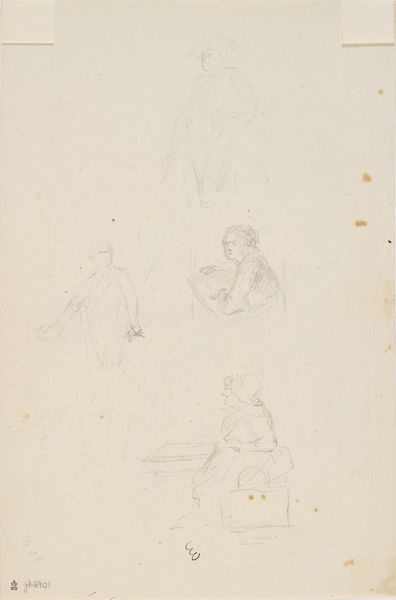
drawing, paper, pencil
#
portrait
#
drawing
#
landscape
#
ancient-egyptian-art
#
figuration
#
paper
#
pencil
Dimensions: height 191 mm, width 126 mm
Copyright: Rijks Museum: Open Domain
Curator: Welcome. Before us is Willem de Famars Testas’s "Vijf studies van Egyptenaren en dieren," a pencil drawing on paper dating back to around 1858 or 1859. What strikes you immediately? Editor: There's a tentative, almost ephemeral quality to the drawing, like a fleeting glimpse of daily life. The thin pencil lines barely contain the figures, creating a sense of openness, vulnerability even. Curator: Indeed. The composition presents five separate vignettes scattered across the page, offering distinct viewpoints and scales. There’s a man seated, viewed from behind, a donkey, various cattle, and a group working at what looks to be a well. Editor: It's compelling to see these figures engaged in labor; a hand pump drawing water. Testas offers insight into their methods and craft. The very sketchiness invites us to imagine the surrounding textures and sounds of the Nile landscape. Curator: Observe the rendering of light and shadow. Notice how he defines form primarily through line rather than through dramatic contrasts, using light to express form but minimizing modeling and depth. This aligns the work with a rather academic style prevalent at that time, but used perhaps as notes on a journey. Editor: The drawing has this feel to me. I think it’s an outsider's gaze, cataloging exotic other and their livestock, reducing human beings and beasts to similar outlines. This drawing shows a means of colonial assessment that seems dehumanizing. Curator: Perhaps. However, one can also argue that Testas attempts to capture authentic gestures and postures, documenting observations. Look, for instance, at the curvature of the donkey's spine, or the forward lean of the worker pulling water, rendering these figures respectfully, attentive to balance, form, and anatomical coherence within its quick, sketched handling. Editor: But doesn’t this technical ability also objectify? He renders bodies as components, resources, rather than fully formed individuals within a shared community and system of exploitation? To me, the sketches reduce the lives of ordinary Egyptian people into the realm of artistic studies divorced from a broader social system. Curator: I see your point about labor being erased. This makes me wonder how much these images, although on the surface seem documentary, can actually reveal the whole story of lived experience. Thank you for that, it adds to the richness and significance that is embedded into what might seem, on the face of it, to be rather unassuming sketches.
Comments
No comments
Be the first to comment and join the conversation on the ultimate creative platform.
